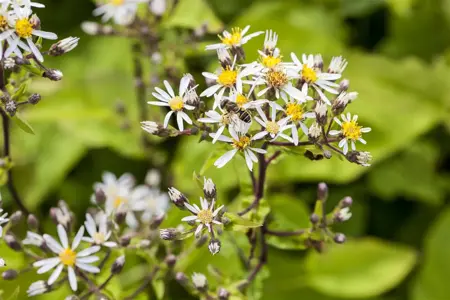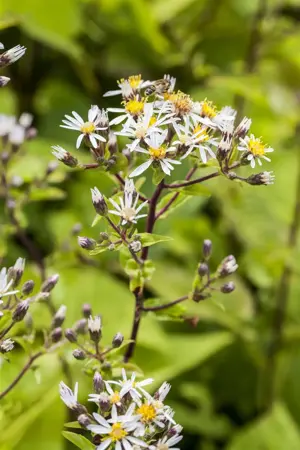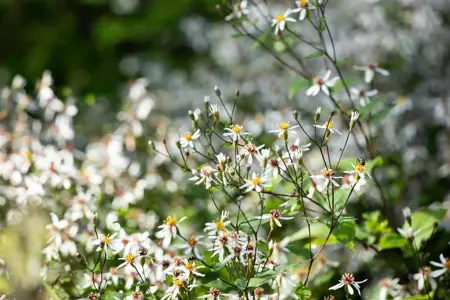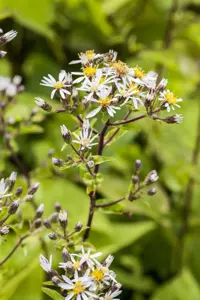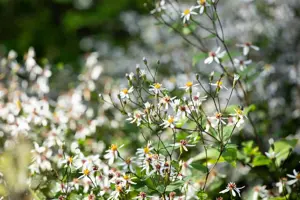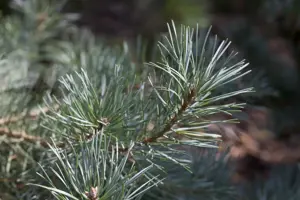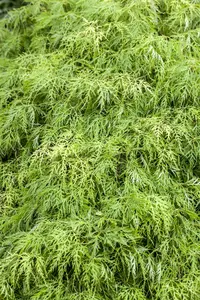Aster divaricatus - P9
Aster divaricatus - P9
Description
The White wood aster (Aster divaricatus) is an upright, bushy, winter-green perennial that produces white, star-shaped flowers arranged in umbels with a pleasant fragrance from August to October. The flowers develop into decorative, silvery fruits in October. Its egg-shaped leaves are medium green in colour. In a sunny to semi-shady location with well-drained, nutrient-rich soil, it usually grows to a height of approx. 60 cm and is approx. 40 cm wide. The White wood aster is well tolerant of frost.
Synonym
Synonyms (botanical): Symphyotrichum, Eurybia divaricata.
Bulletpoints
* Fruit ornamentation
* the flowers are highly favoured by bees, bumblebees and hoverflies
* cut flower
* fragrant flowers
* wintergreen
leaves
The wintergreen leaves of the White wood aster are medium green, ovoid.
Frost hardiness
The White wood aster has good frost hardiness.
Growth
Upright, bushy.
Water
Water regularly and allow the soil to dry out in the meantime.
Location
Preferred location in a sunny to semi-shady position.
Soil
Normal soil.
Planting time
Planting: Autumn, depending on variety also in spring.
Planting partner
The White wood aster sets beautiful accents together with:
Funkia, bergenia, purple bell.
Care
If watered less frequently but thoroughly and thoroughly, the plant roots are encouraged to penetrate into deeper soil layers. This enables the plant to survive dry periods better.
Flower
Aster divaricatus forms star-shaped, white flowers arranged in umbels from August. These exude a pleasant fragrance.
Fruit
The silvery fruits of Aster divaricatus are particularly decorative. These appear from October.
Use
Pruning, bee pasture, ground cover, woodland edge, undergrowth, shade
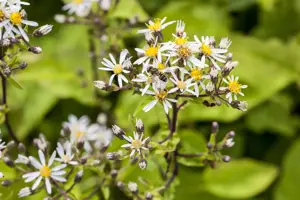
- Article number1200
-
EAN codeASDIVARI-0P9
- Latin nameAster divaricatus
- catalogLandscape shop

